
Run PnP PowerShell from Azure Automation

Run PnP PowerShell from Azure Automation
Azure Automation is a cloud-based automation and configuration service that allows you to automate tasks. It provides a way to run PowerShell scripts in the cloud without managing the underlying infrastructure. This article will explore how to run PnP PowerShell scripts from Azure Automation.
Why use PnP PowerShell with Azure Automation?
PnP PowerShell is a powerful set of cmdlets that allows you to interact with SharePoint. By hosting your PnP PowerShell in Azure Automation, you can automate various SharePoint tasks, such as provisioning sites, managing lists and libraries, and generating periodic reports. You can run PowerShell scripts on a schedule or trigger them based on events.
Configure Azure Automation Account
First, you need to create an Azure Automation account. You can do this by following these steps:
- Navigate to the Azure portal (https://portal.azure.com).
- Click on “Create a resource” and search for “Automation”.

Create resource - Click on “Automation” and then click on “Create”.
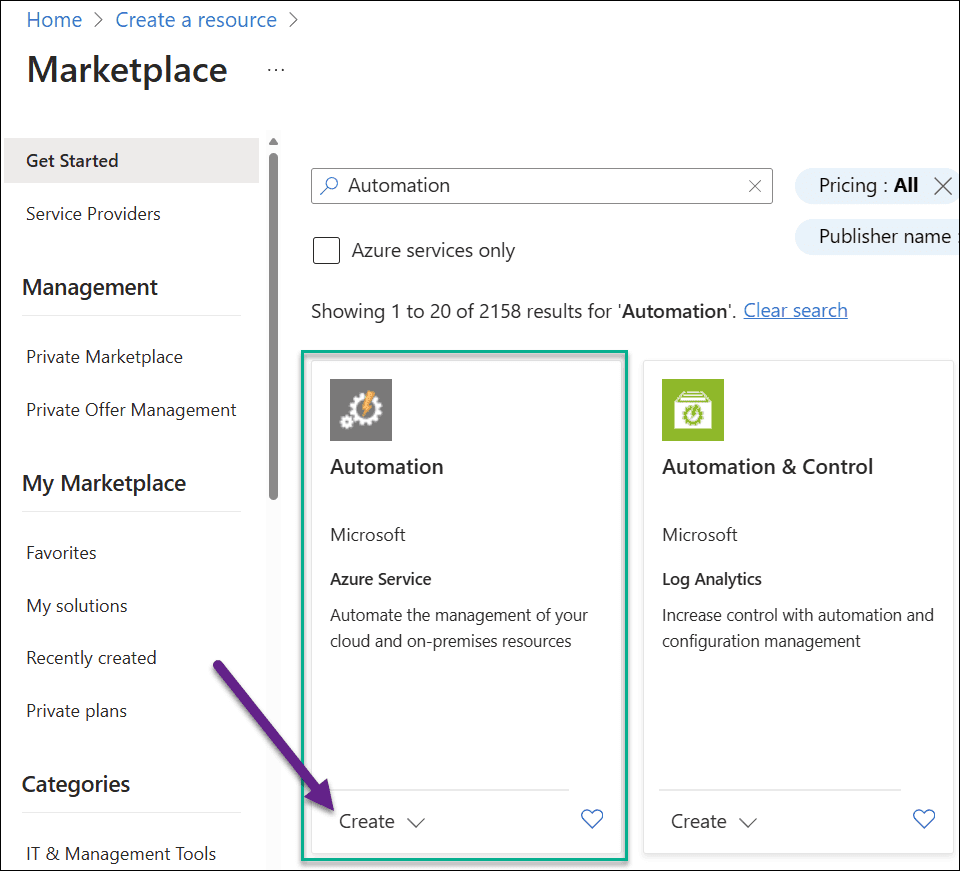
Azure Automation - Fill in the required details, such as the name of the automation account, subscription, resource group, and region.
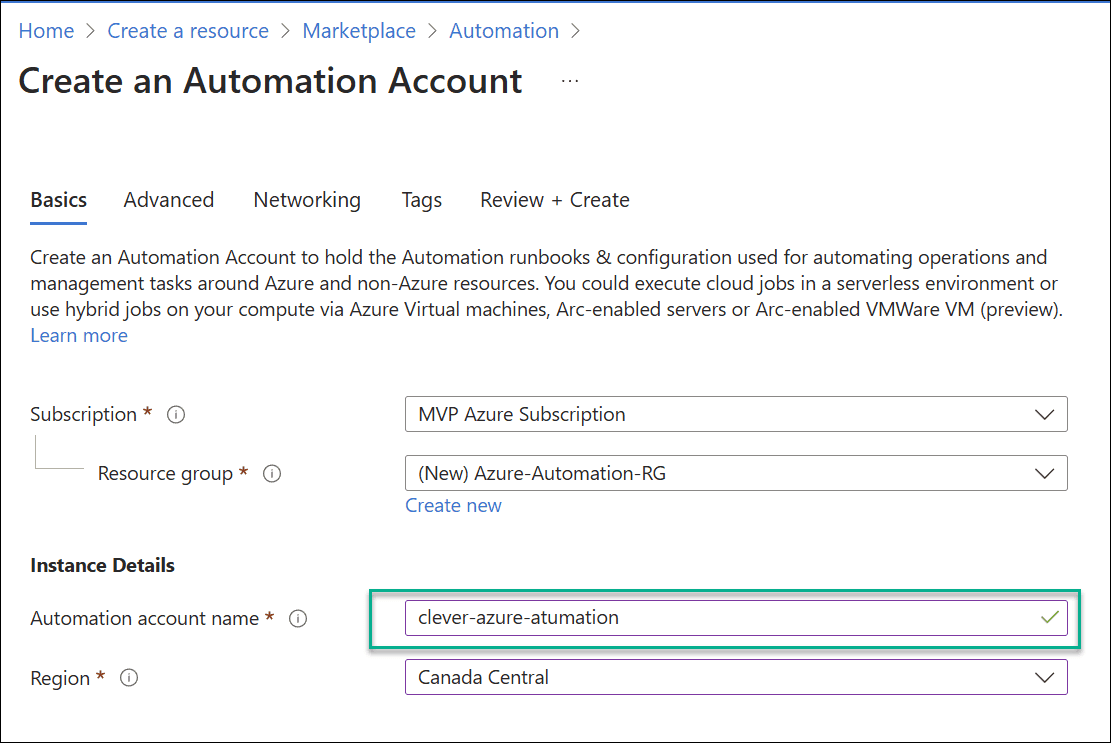
Create resource.png - Navigate to the freshly created Automation account.
Import PnP PowerShell Module
To import PnP.PowerShell module:
Click on “Modules” under “Shared Resources” in the Azure Automation account.
Click on “Add a module”.
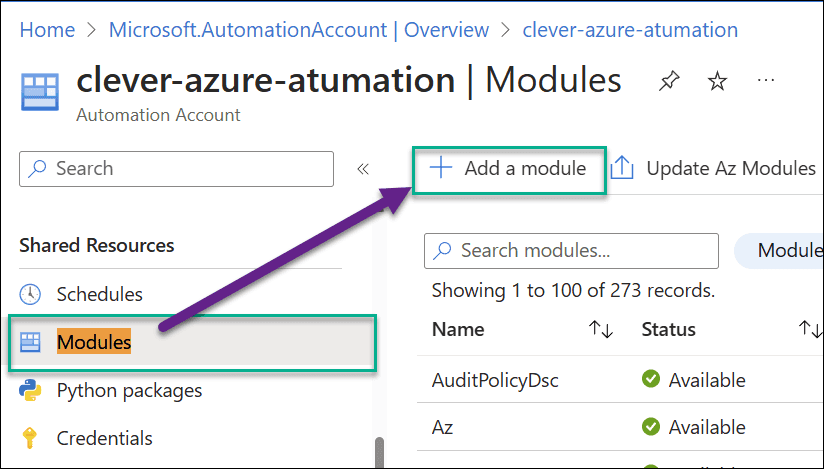
Modules Browse from gallery > Click here to browse from gallery
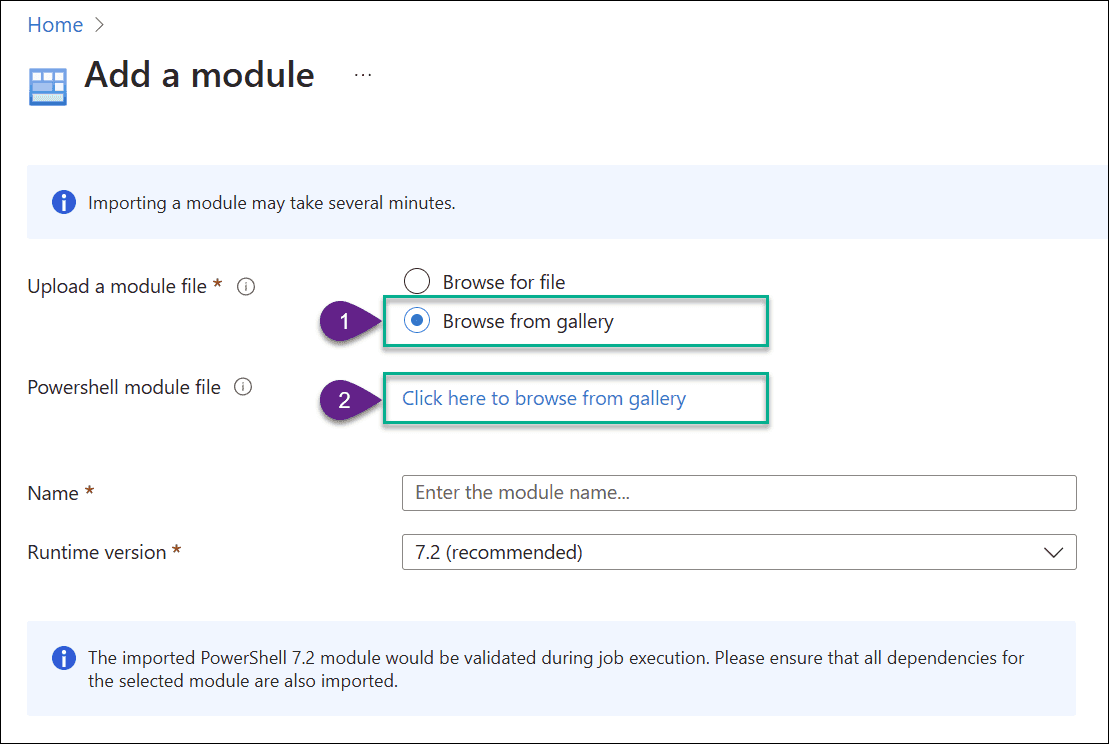
Gallery Click on PnP.PowerShell > Select
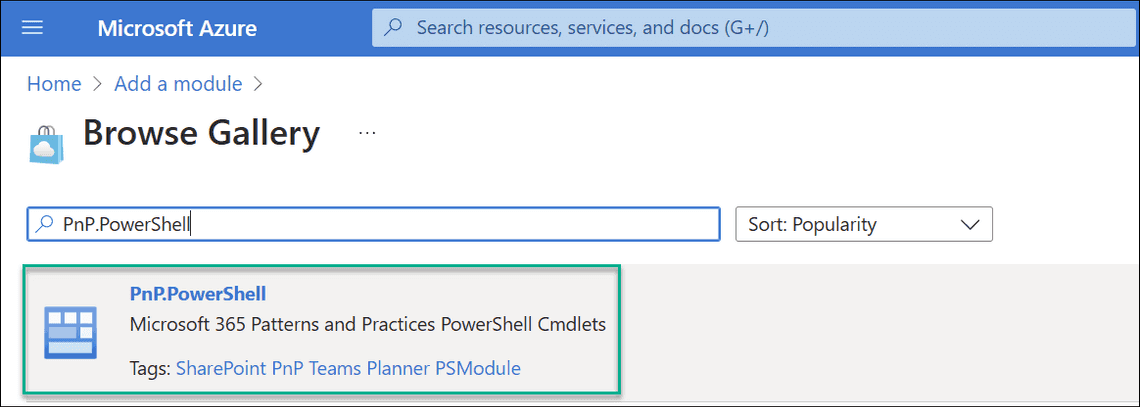
PnP.PowerShell Click on “Import” and wait for a few minutes until the module is imported.

Import You can monitor the import progress by checking the Status column:
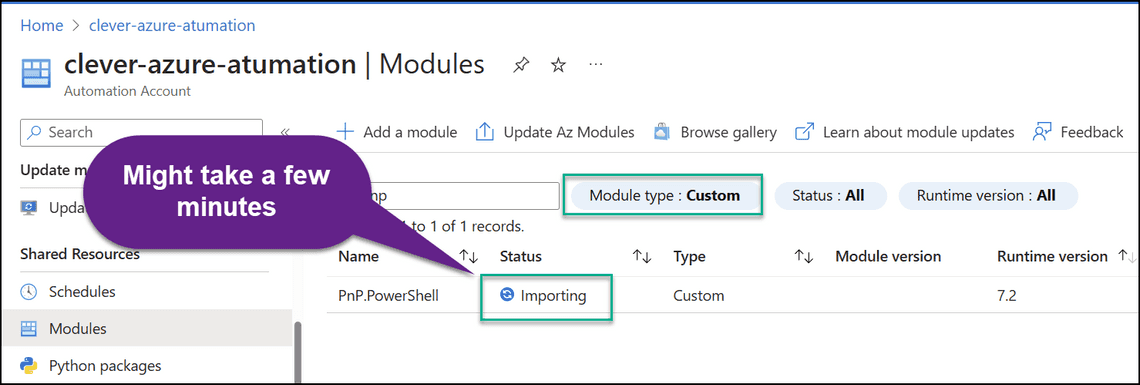
Importing
Configure Managed Identity
Managed Identity is a feature of Azure that allows you to authenticate to services without storing credentials in your code. It has several advantages over other authentication methods, such as not needing to manage service principals or certificates. To configure Managed Identity for your Automation account:
- Click on Identity under “Account settings” in the Azure Automation account.
- Capture the Object ID of the Managed Identity. You will need this later when assigning permissions to the Automation account.
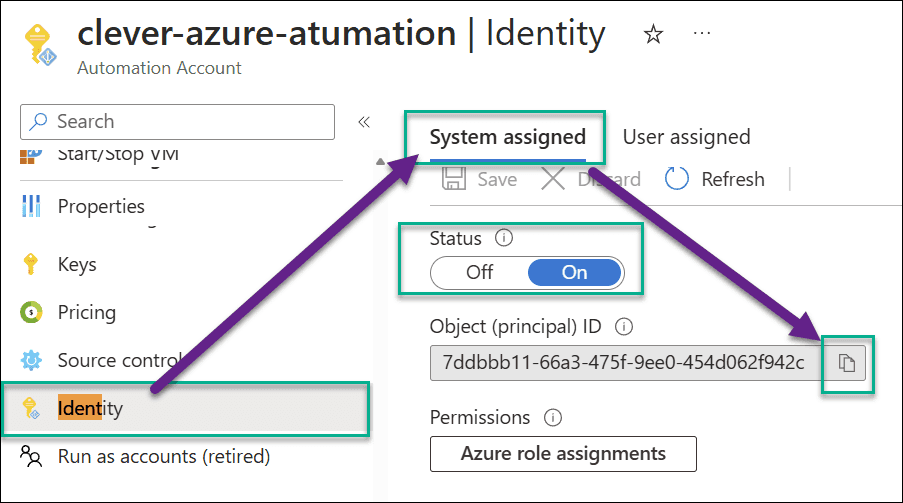
Install PnP PowerShell Module Locally
To assign permissions to the managed identity, we might need to install the PnP.PowerShell module locally. This will allow us to run the Add-PnPAzureADServicePrincipalAppRole cmdlet to assign permissions to the Managed Identity.
To install the PnP.PowerShell module locally
- Launch PowerShell 7
- Run the following command to install the PnP.PowerShell module:
Install-Module -Name PnP.PowerShell -AllowClobber -Force
Assign Permissions to Manage SharePoint
To assign SharePoint permissions to the Managed identity used by the Automation account, run the follow command.
💡Use the Principal ID captured from the earlier step:
Connect-PnPOnline -Url https://contoso.sharepoint.com -InteractiveAdd-PnPAzureADServicePrincipalAppRole -Principal "7ddbbb11-66a3-475f-9ee0-454d062f942c" -AppRole "Sites.FullControl.All" -BuiltInType SharePointOnline

💡 You might need to assign different permissions, based on your case.
Create a Runbook
Now, let’s create our first runbook. A runbook is a set of tasks that you want to automate. In this case, we will create a runbook that runs a PnP PowerShell script to authenticate using the Managed Identity.
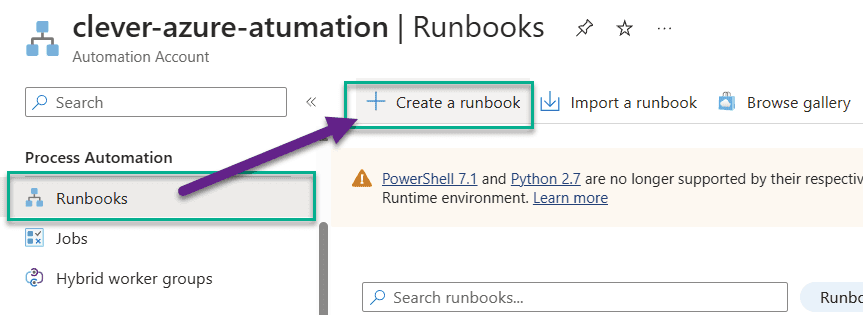
- Pick PowerShell and the latest runtime version:
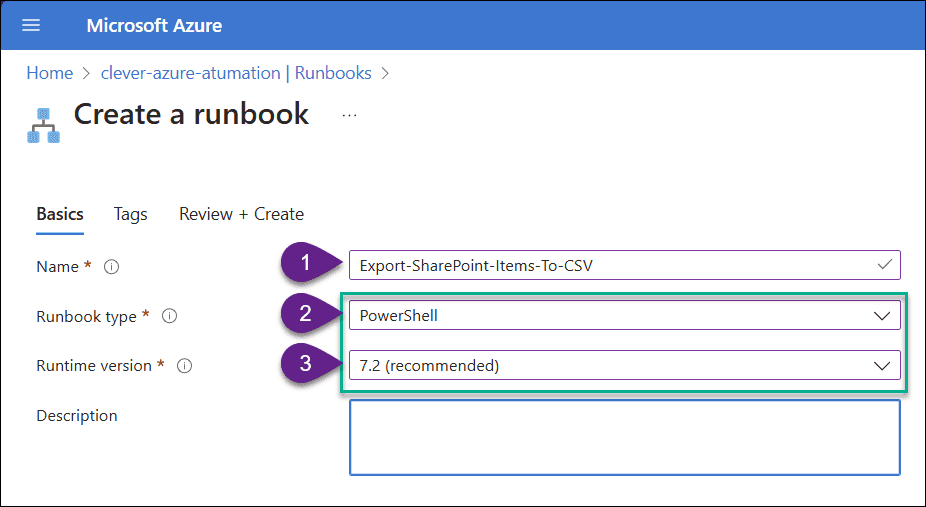
- You can use this sample script to test the connectivity:
Connect-PnPOnline -URL https://contoso.sharepoint.com/ -ManagedIdentityWrite-Output "Connected"
💡 Notice that we are using the ManagedIdentity parameter to authenticate to SharePoint. This will use the Managed Identity we configured earlier to authenticate to SharePoint.
In my case, I will use a script that will get a list of all items from a SharePoint list and export them to a CSV file. It will then upload the CSV file to a “AllClients” document library in SharePoint:
Connect-PnPOnline -URL https://contoso.sharepoint.com/ -ManagedIdentityWrite-Output "Connected"$items = Get-PnpListItem -List Clients -pageSize 100$rows = @()foreach ($item in $items){$row = [PSCustomObject]@{'ID' = $item["ID"]'Title' = $item["Title"]'Preference' = $item["Preference"]'Notes' = $item["Notes"]'Size' = $item["Size"]}$rows += $row}$RmsRecords | Export-Csv ".\Clients.csv" -NoTypeInformationAdd-PnPFile -Path ".\Clients.csv" -Folder "AllClients"Write-Output "Items exported"
- I will paste the script into the runbook and click “Test pane” and then “Start” to run the script:

Result

Schedule the runbook
You can schedule the runbook to run at specific times or intervals. To schedule the runbook:
- Make sure your runbook is published.
- Click on “Schedules” under “Resources” in the Azure Automation account.
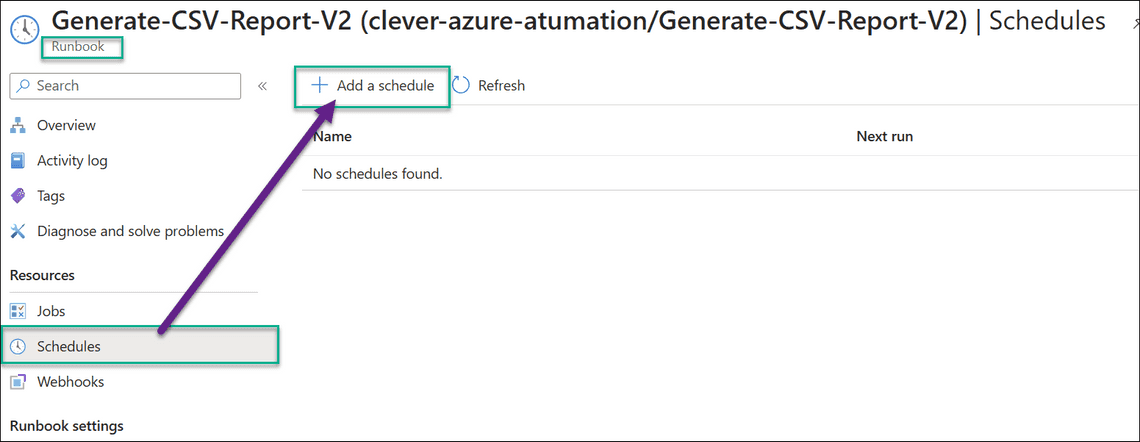
Schedules - Create a new schedule and link it to your runbook
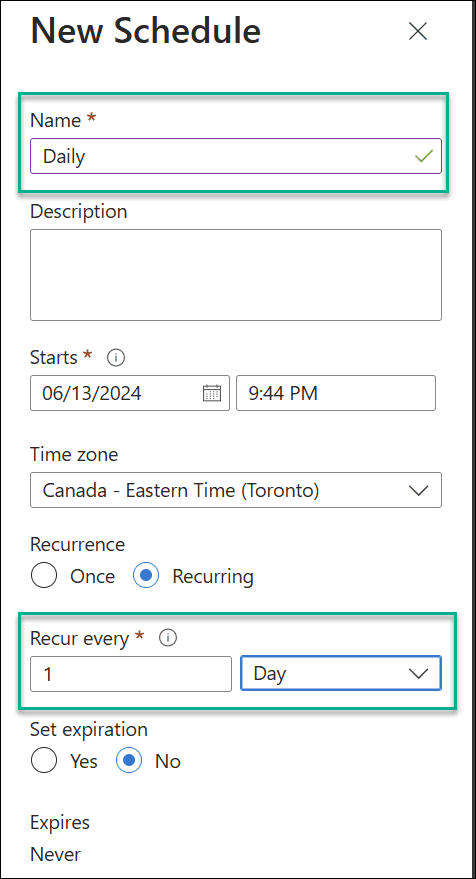
New schedule - Done! Your runbook will now run on the schedule you defined.
Pricing
Azure Automation is a pay-as-you-go service, and you are charged based on the number of runbooks executed and the amount of resources consumed. You can check the pricing details on the Azure Automation pricing page. In most cases, the cost of running PnP PowerShell scripts in Azure Automation is minimal, and you can get started with a free tier.
Conclusion
By combining the power of PnP PowerShell with Azure Automation, you can automate various SharePoint tasks and streamline your SharePoint administration.
This can help you save time and reduce manual effort, allowing you to focus on more important tasks. If you haven’t already, try Azure Automation and see how it can help you automate your workflows.
Share
Related Posts







